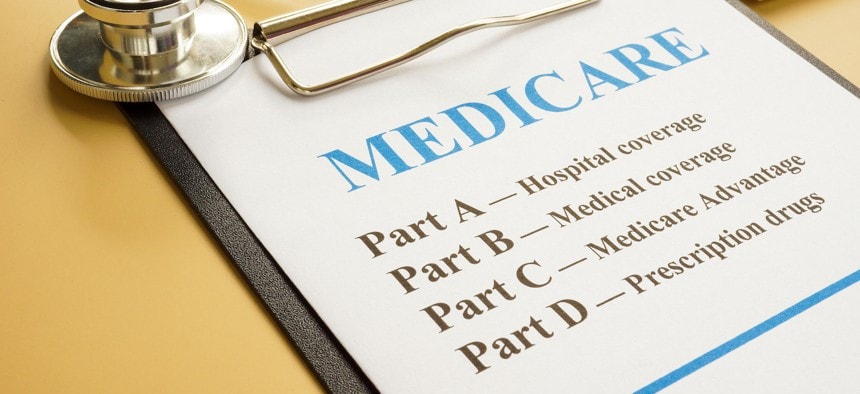15 Essential Facts About Medicare Prescription Drug Coverage

Are you looking to understand the essential facts about Medicare prescription drug coverage? Look no further!
In this article, we will provide you with 15 key points that will help you navigate this important aspect of your healthcare.
From eligibility requirements to coverage options and formularies, we’ve got you covered.
So, sit back, relax, and let us guide you through the ins and outs of Medicare prescription drug coverage.
Key Takeaways
- Enrollment criteria for Medicare prescription drug coverage include age, citizenship, and residency, as well as meeting income thresholds.
- It is important to understand the different coverage options available, such as stand-alone Prescription Drug Plans (PDPs), Medicare Advantage Prescription Drug (MA-PD) Plans, Employer or Union-sponsored Plans, and Special Needs Plans (SNPs), and choose a plan that suits your needs and preferences.
- Prescription drug formularies categorize drugs based on cost and level of coverage, with different tiers having different copayment or coinsurance amounts. It is essential to review the formulary before enrolling to make informed decisions.
- The coverage gap, or donut hole, can result in higher out-of-pocket costs for medications, and it is important to explore cost-saving strategies and advocate for policy changes to alleviate the impact of the coverage gap. This can include opting for generic drugs, discussing therapeutic alternatives with healthcare providers, reviewing and eliminating unnecessary medications, and shopping around for affordable prices at different pharmacies.
Eligibility Requirements
To qualify for Medicare prescription drug coverage, you must meet certain eligibility requirements. These requirements are known as enrollment criteria and include factors such as age, citizenship, and residency.
Additionally, income thresholds play a crucial role in determining eligibility. Medicare Part D, the prescription drug coverage program, takes into account your annual income and assets to determine if you meet the income thresholds. It’s important to note that these income thresholds may vary each year.
If your income falls below a certain threshold, you may be eligible for extra help in paying for your prescription drugs. It’s recommended to review the current income thresholds and enrollment criteria to determine your eligibility for Medicare prescription drug coverage.
Enrollment Periods
When it comes to Medicare prescription drug coverage, it’s important to understand the limited enrollment timeframes and coverage eligibility requirements.
You need to be aware of the specific periods when you can sign up for a Medicare Part D plan, as missing these enrollment periods could result in penalties and delays in obtaining prescription drug coverage.
Additionally, it’s crucial to meet certain eligibility requirements, such as being enrolled in Medicare Part A or Part B, in order to qualify for prescription drug coverage.
Limited Enrollment Timeframes
You can only enroll in Medicare prescription drug coverage during specific enrollment periods known as Limited Enrollment Timeframes. These timeframes are set by the government and have certain eligibility criteria and requirements. It’s important to be aware of these enrollment periods and plan accordingly to ensure you have the coverage you need.
Here are four key points to remember:
- Initial Enrollment Period (IEP): This is the first opportunity you have to enroll in Medicare prescription drug coverage, and it typically occurs when you first become eligible for Medicare.
- Annual Enrollment Period (AEP): This is the time each year when you can review and make changes to your Medicare prescription drug coverage. It typically runs from October 15th to December 7th.
- Special Enrollment Period (SEP): This is a period outside of the regular enrollment periods when you can enroll in Medicare prescription drug coverage. It’s triggered by certain life events such as moving to a new area or losing other drug coverage.
- Open Enrollment Period (OEP): This is a period where you can switch or drop your Medicare prescription drug coverage. It typically runs from January 1st to March 31st.
Understanding these Limited Enrollment Timeframes is crucial to ensuring you have the appropriate Medicare prescription drug coverage. Stay informed and take advantage of these opportunities to enroll or make changes to your coverage.
Coverage Eligibility Requirements
During specific enrollment periods known as Limited Enrollment Timeframes, you can only enroll in Medicare prescription drug coverage if you meet the coverage eligibility requirements. These requirements, also known as enrollment criteria, are in place to ensure that individuals who truly need the coverage can access it. To help you understand the eligibility requirements better, here is a table outlining the coverage benefits and the corresponding criteria:
| Coverage Benefits | Enrollment Criteria |
|---|---|
| Prescription drug coverage | Must be eligible for Medicare Part A and/or Part B |
| Access to a wide range of medications | Must live in the service area of the Medicare drug plan |
| Affordable copayments and premiums | Must not be enrolled in any other creditable prescription drug coverage |
| Coverage for both brand-name and generic drugs | Must be willing to pay the monthly premium |
Part D Coverage Options
There are multiple coverage options available for Medicare Part D. When it comes to enrolling in Part D, there are a few enrollment requirements that you should be aware of. First, you must be enrolled in Medicare Part A or Part B to be eligible for Part D. Second, you must live in the service area of the Part D plan you want to join. Once you meet these requirements, you can choose from various plan options.
Here are four key options to consider:
- Stand-alone Prescription Drug Plans (PDPs): These plans offer coverage for prescription drugs only.
- Medicare Advantage Prescription Drug (MA-PD) Plans: These plans provide both medical and prescription drug coverage.
- Employer or Union-sponsored Plans: Certain employers or unions offer prescription drug coverage that meets Medicare standards.
- Special Needs Plans (SNPs): These plans cater to individuals with specific health conditions, such as diabetes or HIV/AIDS.
With these different options, you can find a plan that best suits your needs and preferences.
Prescription Drug Formularies
When selecting a Medicare Part D plan, it’s important to understand the prescription drug formularies available to you. Prescription drug formularies are lists of drugs covered by a specific insurance plan. These formularies often have different tiers, which categorize drugs based on their cost and level of coverage. Each tier has a different copayment or coinsurance amount, with lower tiers generally being less expensive.
It’s essential to review the formulary of a plan before enrolling, as it can impact your out-of-pocket costs. Additionally, some formularies may have restrictions, such as requiring prior authorization or step therapy. Prior authorization means you need approval from your plan before you can access certain medications, while step therapy requires you to try less expensive drugs before moving on to more expensive options.
Understanding these formulary restrictions can help you make informed decisions about your prescription drug coverage.
Generic Vs. Brand Name Drugs
To make informed decisions about your Medicare prescription drug coverage, you should compare generic and brand name drugs based on their cost and effectiveness. Here are four important points to consider:
- Cost savings: Generic drugs are typically much cheaper than brand name drugs. Choosing generic options can help you save a significant amount of money on your medications.
- FDA-approved: Both generic and brand name drugs approved by the Food and Drug Administration (FDA) are considered safe and effective. You can trust that generic drugs are just as reliable as their brand name counterparts.
- Active ingredients: Generic drugs contain the same active ingredients as brand name drugs. This means that they work in the same way to treat your medical condition.
- Quality standards: Generic drugs must meet the same strict quality standards as brand name drugs. The FDA ensures that generic medications are of the same high quality, purity, and strength.
Cost Sharing and Copayments
Now let’s talk about the cost sharing and copayments involved in Medicare prescription drug coverage.
When it comes to generic drugs, you’ll typically have lower copayments compared to brand name drugs.
Medicare offers various cost sharing options to help you manage your prescription drug expenses.
Understanding these options can help you make informed decisions about your healthcare and budget.
Copayments for Generic Drugs
For Medicare prescription drug coverage, you’ll need to pay copayments for generic drugs as part of the cost sharing. This helps ensure that prescription medications remain affordable for everyone.
Here are four essential facts about copayments for generic drugs:
- Copayments for generic drugs are typically lower than for brand-name drugs. This means you can save money by choosing generic alternatives.
- Medicare Part D plans offer a wide range of generic drugs that are covered at different copayment amounts. It’s important to review your plan’s formulary to see which generics are covered and at what cost.
- Some Medicare Part D plans even offer $0 copayments for certain generic drugs. This can significantly reduce your out-of-pocket expenses.
- It’s worth comparing copayment amounts for generic drugs across different Part D plans to find the most cost-effective option for your specific medication needs.
Cost Sharing Options
You will also need to understand the cost sharing options, including copayments, for Medicare prescription drug coverage. Medicare offers different cost sharing options to help you manage the expenses associated with your prescription medications. One of the most common cost sharing strategies is through copayments, where you pay a fixed amount for each medication you receive. The amount of the copayment can vary depending on the specific drug and the tier it falls under in your plan’s formulary. To give you a better understanding, here is a table outlining the different copayment strategies:
| Copayment Tier | Cost |
|---|---|
| Tier 1 | $5 |
| Tier 2 | $10 |
| Tier 3 | $30 |
Medicare Advantage Prescription Drug Plans (MA-PD)
To maximize your prescription drug coverage, consider enrolling in a Medicare Advantage Prescription Drug Plan (MA-PD). These plans combine your hospital, medical, and prescription drug coverage into one convenient package. Here are four reasons why MA-PD may be the right choice for you:
- Lower Medication Costs: MA-PD plans often offer lower copayments and coinsurance for prescription drugs compared to standalone Medicare Part D plans. This can help you save money on your monthly medication expenses.
- Comprehensive Coverage: MA-PD plans typically include coverage for a wide range of prescription drugs. This means you can get the medications you need without worrying about gaps in coverage.
- Access to Network Pharmacies: MA-PD plans have a network of pharmacies where you can fill your prescriptions. This ensures that you have convenient access to your medications wherever you are.
- Additional Benefits: Some MA-PD plans may also offer extra benefits, such as dental, vision, or hearing coverage. These additional benefits can further enhance your healthcare experience.
Consider enrolling in a Medicare Advantage Prescription Drug Plan to enjoy these advantages and ensure comprehensive prescription drug coverage.
Extra Help for Low-Income Beneficiaries
Low-income beneficiaries can receive extra help with their Medicare prescription drug coverage. If you have a limited income and resources, you may qualify for low-income assistance to help pay for your medications. To determine your financial eligibility, the Social Security Administration looks at your income and assets. If you meet the criteria, you can receive extra help to lower your prescription drug costs. Here is a table that provides an overview of the income and asset limits for the extra help program:
| Income Limits | Asset Limits |
|---|---|
| Individual: $19,140 | Individual: $14,610 |
| Married: $25,860 | Married: $29,160 |
| These amounts increase with family size. | These amounts increase with family size. |
If you believe you qualify for this program, it is important to apply to ensure you receive the assistance you need.
The Coverage Gap (Donut Hole)
You may wonder how the coverage gap, commonly known as the donut hole, affects you as a Medicare beneficiary. Understanding its impact is crucial in managing your prescription drug costs.
Additionally, learning cost-saving strategies can help you navigate through this gap and minimize your out-of-pocket expenses.
Lastly, it’s important to stay informed about recent changes in Medicare policies that aim to close the coverage gap and provide more affordable prescription drug coverage.
Impact on Beneficiaries
If you qualify for Medicare prescription drug coverage, it’s important to understand the impact that the coverage gap, also known as the ‘donut hole,’ can have on you. Here are four key points to consider:
- Financial burden: The coverage gap can result in higher out-of-pocket costs for your medications, which can be a significant burden for individuals on a fixed income.
- Delayed access to medications: During the coverage gap, you may experience delays in receiving your medications due to the increased costs. This can negatively impact your health and well-being.
- Limited drug options: Some medications may not be covered during the coverage gap, leaving you with limited options for managing your health conditions.
- Stress and anxiety: The uncertainty and financial strain caused by the coverage gap can lead to increased stress and anxiety, affecting your overall quality of life.
To alleviate the impact of the coverage gap, it’s important to explore cost-saving strategies and advocate for policies aimed at closing the coverage gap. Remember, your health and well-being matter, and there are resources available to help you navigate through this challenging period.
Cost-Saving Strategies
To save costs during the coverage gap, consider exploring strategies for managing your medication expenses.
One cost-saving strategy is to opt for generic drugs instead of brand name drugs. Generic drugs contain the same active ingredients as their brand name counterparts, but they’re usually much cheaper. By choosing generic drugs, you can significantly reduce your out-of-pocket expenses.
Another strategy is to talk to your doctor or pharmacist about therapeutic alternatives. They may be able to recommend lower-cost medications that are just as effective for your condition.
Additionally, it’s important to review your medication list regularly and eliminate any unnecessary drugs. This can help you save money and avoid potential drug interactions.
Closing the Coverage Gap
Closing the Coverage Gap (The Coverage Gap (Donut Hole)) occurs when your total prescription drug costs reach a certain threshold. It’s important to be aware of this gap in coverage and plan accordingly.
Here are four cost-saving strategies to help you navigate this stage of your Medicare prescription drug coverage:
- Generic Substitution: Ask your doctor or pharmacist if there are generic alternatives for your medications. Generics are often cheaper and can provide the same benefits.
- Utilize Patient Assistance Programs: Many pharmaceutical companies offer assistance programs to help lower the cost of prescription drugs. Research and inquire about these programs to see if you qualify.
- Shop Around: Compare prices at different pharmacies to find the best deal. Prices can vary significantly, so it’s worth taking the time to find the most affordable option.
- Talk to Your Doctor: Discuss your concerns about the coverage gap with your doctor. They may be able to prescribe alternative medications or suggest other cost-saving strategies.
Catastrophic Coverage
You can access Catastrophic Coverage through Medicare Prescription Drug Coverage when you have reached the yearly limit for out-of-pocket expenses.
Catastrophic drug coverage provides financial protection for individuals who’ve high-cost medications. Once you reach your out-of-pocket limit, which includes deductibles, copayments, and coinsurance, you automatically qualify for catastrophic coverage.
This means that you’ll only be responsible for a small coinsurance or copayment for your medications for the remainder of the year.
Catastrophic coverage ensures that individuals with significant prescription drug expenses aren’t burdened with excessive costs. It provides a safety net and peace of mind for those who rely on expensive medications to manage their health conditions.
With catastrophic coverage, you can have access to the medications you need without worrying about the financial strain.
Preferred Pharmacy Networks
If you frequently rely on Medicare Prescription Drug Coverage for your medications, you may want to consider utilizing preferred pharmacy networks. These networks offer a range of benefits that can help you save money and receive better service. Here are four reasons why you should consider preferred pharmacy networks:
- Preferred pharmacy discounts: By using a preferred pharmacy, you can take advantage of discounted prices on your prescription medications. This can help you save money and lower your out-of-pocket expenses.
- Better access to medications: Preferred pharmacy networks often have a larger selection of medications available compared to standard networks. This means you’re more likely to find the medications you need at your preferred pharmacy.
- Convenient locations: Preferred pharmacy networks typically have a wide network of pharmacies, making it easier for you to find a location that’s convenient for you. This can save you time and hassle when it comes to filling your prescriptions.
- Personalized service: Preferred pharmacy networks prioritize customer service and strive to provide personalized care to their members. You can expect a higher level of attention and support when using a preferred pharmacy.
Mail Order and Home Delivery Options
When utilizing preferred pharmacy networks for your Medicare Prescription Drug Coverage, you can also explore convenient options such as mail order and home delivery for your medications. These options offer numerous benefits, including time-saving and hassle-free experiences. With mail order, you can have your prescriptions delivered right to your doorstep, eliminating the need to visit a pharmacy in person. This is especially beneficial for individuals who have difficulty leaving their homes or live in remote areas. Home delivery provides convenience by ensuring that your medications are always available to you, without the need for regular trips to the pharmacy. Take a look at the table below to see some of the advantages of mail order and home delivery options:
| Mail Order Benefits | Home Delivery Convenience |
|---|---|
| Saves time | No need to visit a pharmacy |
| Delivered to your doorstep | Medications always available |
| Convenient for individuals with limited mobility | Eliminates regular trips to the pharmacy |
Prior Authorization Requirements
When it comes to Medicare prescription drug coverage, it’s important to be aware of the prior authorization requirements.
These requirements include coverage limitations for certain drugs, an approval process that must be followed for medication, and the need for necessary prescription documentation.
Understanding and adhering to these requirements is crucial in order to ensure that you receive the appropriate coverage for your medications under Medicare.
Coverage Limitations for Drugs
To ensure that you receive the necessary medications, Medicare prescription drug coverage may require prior authorization for certain drugs. This is done to ensure that the medications are appropriate for your specific health condition and to manage costs.
Here are some important facts about coverage limitations for drugs:
- Coverage restrictions: Medicare prescription drug plans may have restrictions on coverage for certain drugs. This means that the plan may only cover certain medications or may require additional steps before covering a specific drug.
- Formulary limitations: Medicare drug plans have a formulary, which is a list of covered drugs. If your medication isn’t on the formulary, you may need to get prior authorization from your plan.
- Prior authorization process: Prior authorization requires your healthcare provider to submit additional information to the plan to demonstrate the medical necessity of the drug. This process can take time, so it’s important to plan ahead.
- Appeal process: If your request for prior authorization is denied, you have the right to appeal the decision. Your healthcare provider can help you with this process.
Understanding these coverage limitations and requirements can help ensure that you have access to the medications you need under your Medicare prescription drug coverage.
Approval Process for Medications
To obtain approval for your medications under Medicare prescription drug coverage, you must meet the prior authorization requirements. The approval process for medications is in place to ensure the safety and effectiveness of the drugs you receive.
It involves your healthcare provider submitting a request to Medicare, detailing the medication and its intended use. Medicare then reviews the request and determines whether the medication meets the necessary criteria for approval.
This process may take some time, so it’s important to plan ahead and discuss your medication needs with your healthcare provider. It’s worth noting that the approval process for medications can have an impact on beneficiaries, as it may require additional steps and documentation.
However, it’s ultimately designed to prioritize your health and well-being.
Necessary Prescription Documentation
To obtain approval for your medications under Medicare prescription drug coverage, you’ll need to provide the necessary prescription documentation that meets the prior authorization requirements.
Here are the key things you need to know about the necessary documentation and prescription requirements:
- Complete and accurate information: Make sure your prescription includes all the required details, such as your name, the medication name, dosage, and frequency.
- Medical necessity: The documentation should clearly explain why the prescribed medication is necessary for your specific medical condition.
- Supporting evidence: In some cases, additional documentation may be needed, such as medical records or test results, to support the need for the medication.
- Timely submission: It’s crucial to submit your prescription documentation in a timely manner to ensure the approval process isn’t delayed.
Step Therapy and Quantity Limits
When choosing a Medicare prescription drug plan, it’s important to be aware of the step therapy and quantity limits that may apply to your medications.
Step therapy is a process where you may be required to try lower-cost alternatives before your plan covers certain drugs. This can help ensure that you’re receiving the most effective and affordable treatment for your condition. However, if you have already tried step therapy alternatives or if they aren’t medically appropriate for you, you may be eligible for an exemption.
Quantity limits, on the other hand, restrict the amount of medication that can be dispensed at one time. This is done to promote safe and appropriate use of medications.
It’s crucial to understand these limitations and consult with your healthcare provider to find the best solution for your specific needs.
Medicare Prescription Drug Coverage and Other Insurance
If you have other insurance alongside your Medicare prescription drug coverage, it’s important to understand how the two work together. Here are four key points to consider:
- Eligibility criteria: Different insurance plans may have different eligibility requirements. Make sure you meet the criteria for both your Medicare prescription drug coverage and your other insurance to ensure you’re properly covered.
- Drug plan options: Medicare offers different drug plan options, such as standalone prescription drug plans (PDPs) and Medicare Advantage Prescription Drug (MA-PD) plans. Understand which option works best for you and how it aligns with your other insurance coverage.
- Coordination of benefits: Your other insurance may be the primary payer for certain medications, while Medicare prescription drug coverage may be secondary. It’s essential to understand how these benefits coordinate to maximize your coverage and minimize out-of-pocket costs.
- Communication with providers: Keep your healthcare providers informed about your dual coverage. They can help navigate the complexities and ensure that your medications are covered by the appropriate insurance plan.
Frequently Asked Questions
Can I Use My Medicare Prescription Drug Coverage at Any Pharmacy?
Yes, you can use your Medicare prescription drug coverage at any pharmacy. However, if you want to use your coverage at preferred pharmacies, you can find participating pharmacies by checking with your plan.
What Types of Medications Are Typically Not Covered by Medicare Part D?
Certain types of medications, such as over-the-counter drugs, vitamins, and weight loss drugs, may not be covered by Medicare Part D. You may want to explore alternatives to Medicare prescription drug coverage for these medications.
Can I Still Get Medicare Prescription Drug Coverage if I Have Other Insurance?
Yes, you can still get Medicare prescription drug coverage if you have other insurance. However, there are eligibility requirements that need to be met. Make sure to check if your other insurance is compatible with Medicare.
Is Prior Authorization Required for All Medications Covered Under Medicare Part D?
Yes, prior authorization is required for some medications covered under Medicare Part D. It helps ensure the medication is necessary and appropriate. Your Medicare coverage can provide more information on which medications require prior authorization.
Are There Any Restrictions on the Quantity of Medications I Can Receive Through Medicare Prescription Drug Coverage?
You may face quantity restrictions or dispensing limits for medications under Medicare prescription drug coverage. These limitations ensure the appropriate use of medications and help control costs while still providing necessary treatment.









